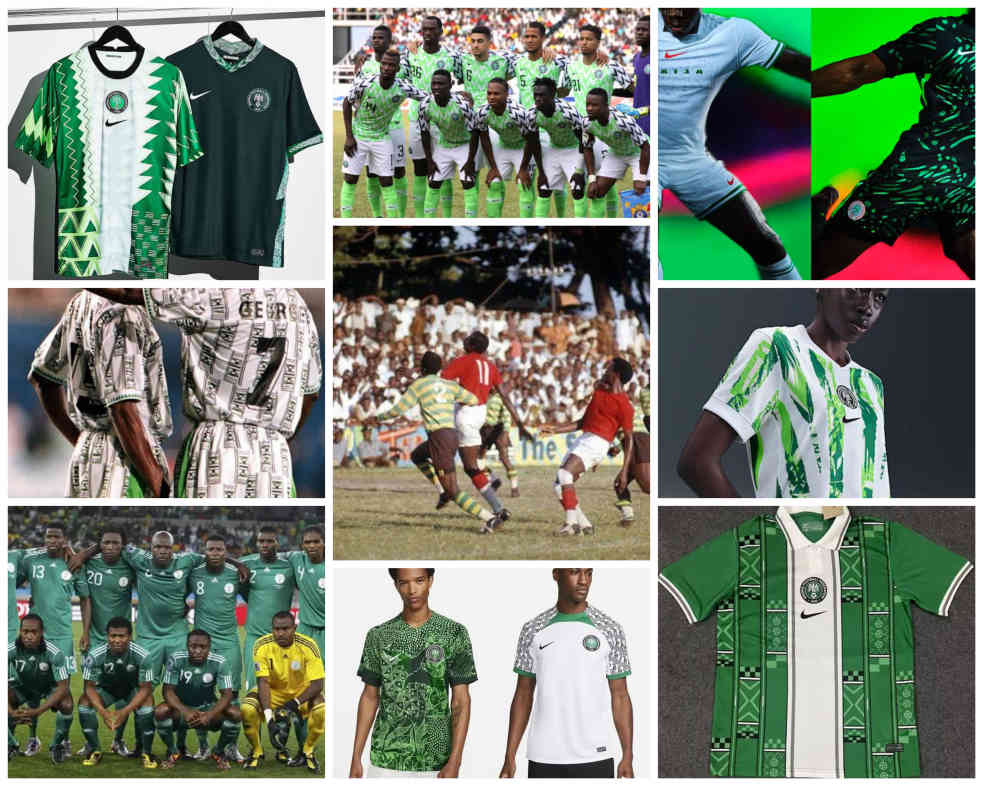The Nigerian football kit has become one of the most anticipated reveals ahead of every major tournament, with each new design sparking excitement and global attention.
Over the years, manufacturers have carefully crafted jerseys that not only serve performance needs but also embody Nigerian culture, often going viral the moment they are unveiled.
Some designs have been so iconic that, even after being discontinued, they remain highly sought after in the market. From the scarlet shirts of the “Red Devils” era to the bold zig-zag “Naija” swagger that sold out online within hours, Nigeria’s football kits tell a rich story that blends identity, design, technology, and pop culture.
In this comprehensive guide, we’ve compiled the full history of Nigerian football kits for both the Super Eagles (the men’s team) and the Super Falcons (the women’s team), celebrating the evolution of style and heritage in Nigerian football.
Table of Contents
Before The Super Eagles: Red Devils & New Identity (Pre-1960s)
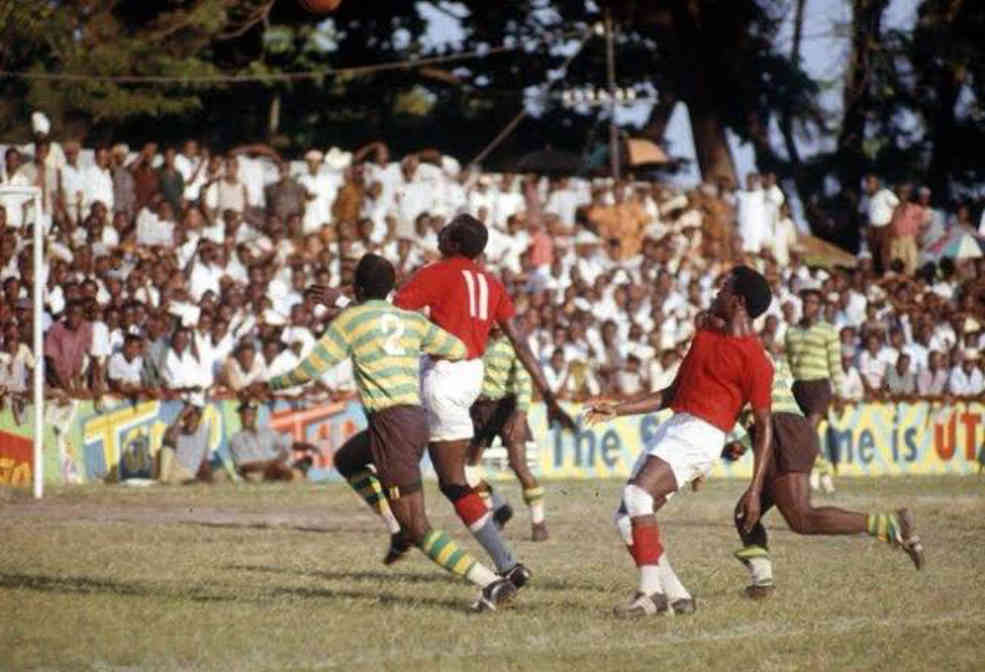
Nigeria’s earliest national teams took to the pitch in red tops and white shorts, a look that earned them the nickname “Red Devils.” Following independence, the symbolism shifted, with the green and white of the national flag replacing red as the defining identity.
Through the 1970s and 1980s, the kits were largely straightforward block-colour designs, but the eagle crest and flag-inspired palette laid the foundation for decades of football heritage.
Since then, while patterns, manufacturers, and styles have evolved with time, the essence has remained constant; the green, white, and eagle have continued to define Nigeria’s football identity.
Supplier Eras & World Stage Debut (1980s–1994)

By the 1980s, Nigeria rotated through brands like Erima and Admiral before Adidas took the reins in the early 1990s. It was a partnership that would dress the Super Eagles during one of the most defining chapters in the nation’s football history; their first-ever World Cup appearance at USA ’94.
The Adidas strip, a clean green design with white accents, became more than just a kit. It was the shirt in which Nigeria topped their group, stunned the world, and announced both themselves and African football on the grandest stage.
That summer was a watershed moment. Nigeria’s dazzling football, played in one of the game’s most iconic eras, cemented its reputation as a force to be reckoned with.
Even today, replicas of that USA ’94 kit are cherished, recycled, and proudly worn. For many Nigerians, it is more than fabric; it is a reminder of when football lifted a nation and etched its name onto the global map.
Nike’s First Era & Golden Summer (1994–2003)
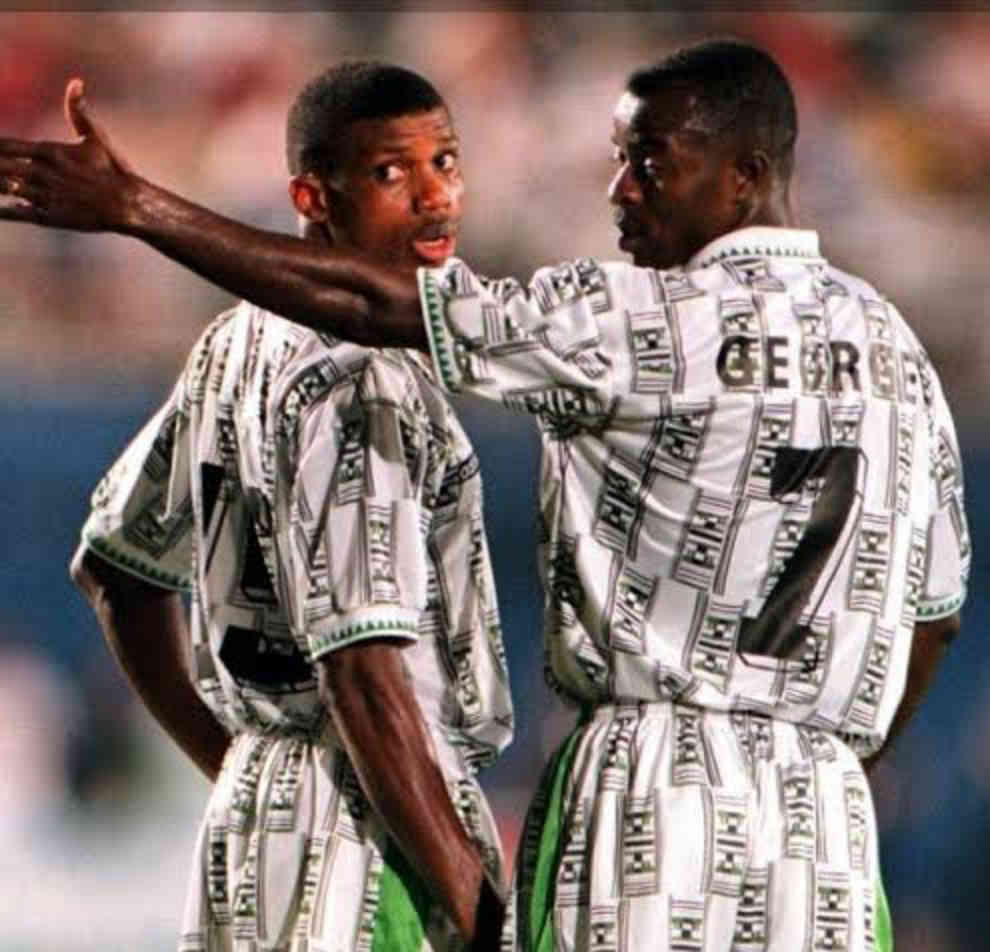
Nike took over from Adidas in 1994, ushering in a new era of bold designs that spanned three World Cups and Nigeria’s unforgettable triumph at the 1996 Atlanta Olympics, where the Super Eagles became the first African men’s football team to win Olympic gold.
The kits of that era were instantly recognizable. Oversized eagle crests, statement collars, and deeper shades of green gave Nigeria a distinctive look that fans around the world embraced. The Atlanta ’96 strip, in particular, remains iconic, remembered as much for its daring design as for the golden glory it represented.
By the late 1990s and early 2000s, Nike refined the style with darker, sleeker jerseys for the 1998 World Cup in France and the 2002 World Cup in Korea/Japan. Featuring the brand’s early Dri-FIT technology, these shirts marked a step forward in performance wear, blending innovation with the enduring swagger of Nigerian football.
Adidas Returns: Consistency Over Flash (2004–2014)

Between 2004 and 2014, Nigeria returned to Adidas as its primary kit supplier, a decade defined by the famous three stripes and a palette that shifted between bright and forest greens.
Functionality became the focus of this era. Slimmer silhouettes and moisture-wicking polyester reflected the evolution of modern sportswear, while still carrying the symbolic colours of the Super Eagles.
The standout came at the 2010 World Cup in South Africa. Nigeria’s vibrant green strip was more than just a kit; it represented the nation on African soil at football’s biggest stage, a moment of pride in the continent’s first World Cup.
Nike Returns & The “Naija” Revolution (2015–2019)
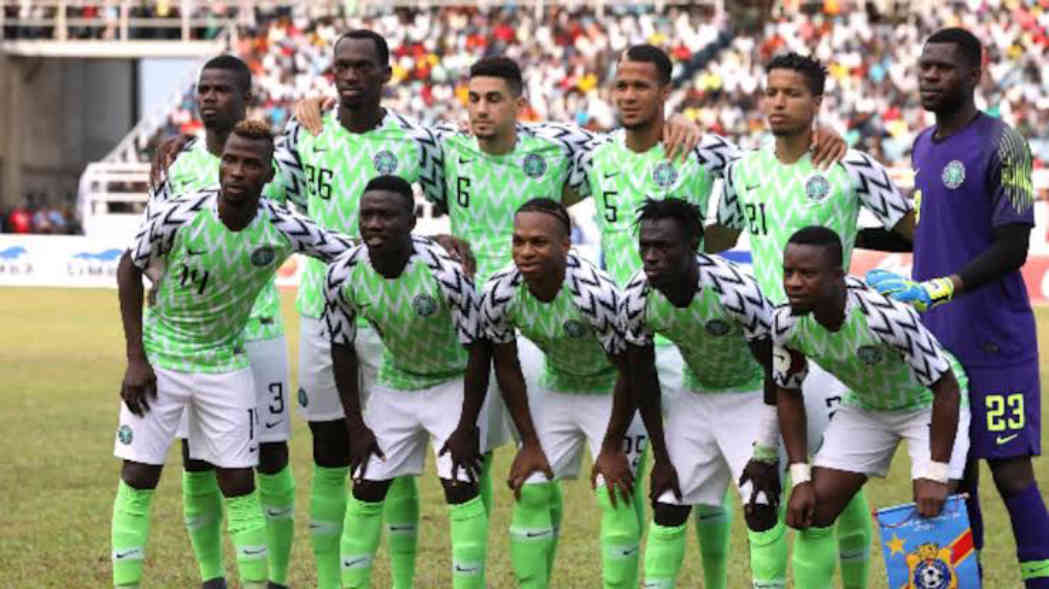
Nike re-signed with the Nigerian Football Federation in 2015, reclaiming a partnership that would soon redefine football fashion. Just three years later came the most talked-about kit drop in the sport’s history.
The 2018 “Naija” collection paid homage to the iconic USA ’94 design with its bold zig-zag chevron home kit, paired with a sleek black away strip and an entire lifestyle range that blurred the line between sport and streetwear.
The launch sparked global hysteria. Queues snaked outside Nike Town in London, online stores crashed within minutes, and more than three million pre-orders flooded in. The jersey wasn’t just a kit; it was a cultural phenomenon, a statement of Nigerian swagger that resonated far beyond football.
Even today, many fans still hail the 2018 drop as the pinnacle of modern kit design, though Nike’s newer releases continue to push boundaries and capture the spirit of the Super Eagles.
Hand-Drawn Heritage (2020–2021)
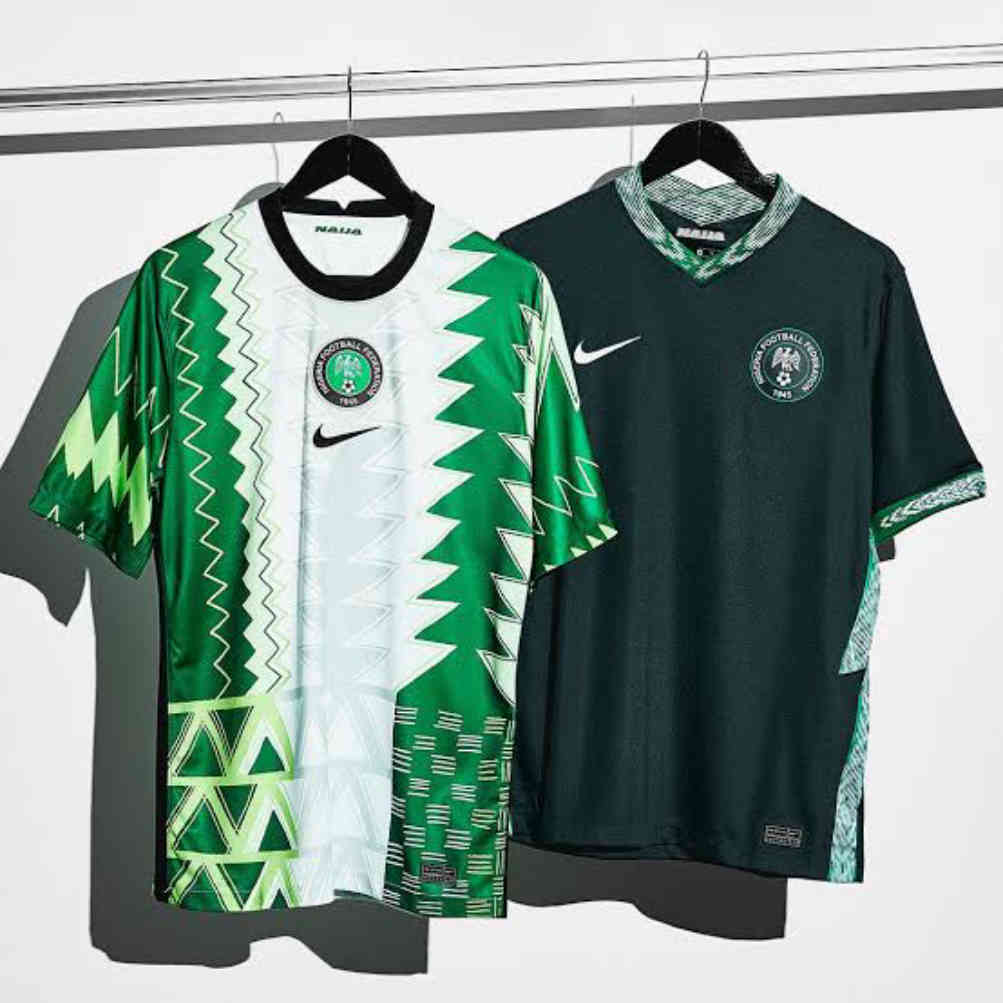
In 2020, Nike unveiled a home kit inspired by traditional agbada robes, featuring hand-drawn patterns and intricate detailing. It marked a shift from bold statements to cultural storytelling, weaving Nigeria’s rich textile heritage into the fabric of modern sportswear.
The design captured the essence of what Nigeria’s national teams represent, football not just as a sport, but as an extension of culture and identity.
Once again, Nike struck gold. Fans flooded social media with praise, hailing the jersey as another masterpiece. Demand was immediate, and the kit sold out shortly after release, cementing its place as a modern classic.
Missed World Cup, Unmissable Kits (2022-2023)
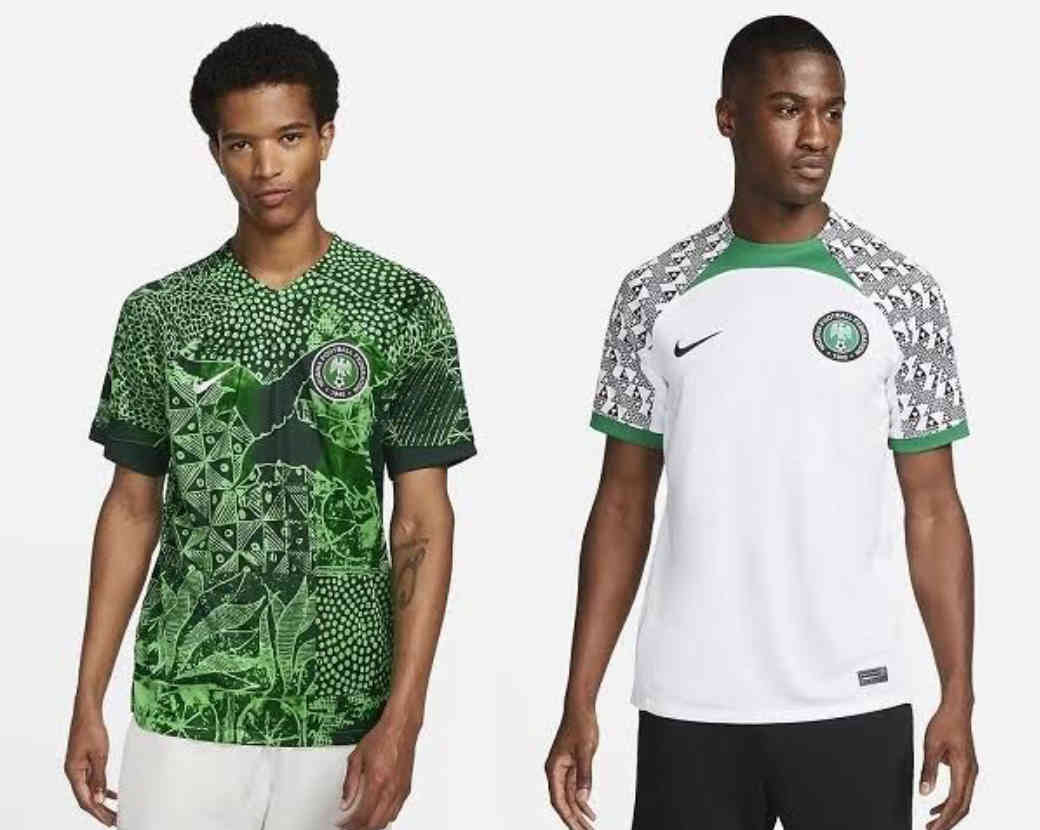
Despite Nigeria’s absence from Qatar 2022, Nike pressed ahead with fresh designs featuring bright neon shades and bold patterns. The reception was mixed; many fans lamented that the kits never had their moment on football’s biggest stage.
Yet commercially, the shirts told a different story. Sales were strong, underscoring how Nigeria’s jerseys had grown into a global brand of their own, transcending tournament appearances.
The Super Falcons, however, ensured the designs didn’t go unnoticed. Ahead of the 2023 Women’s World Cup, the women’s side received kits equal in flair and performance to the men’s, and Nigerian supporters rallied behind them.
While the Super Eagles’ absence was felt, it was the Falcons who carried the nation’s colours proudly, turning disappointment into a moment of pride for women’s football.
White-Home Shock & Wordmark Boldness 2024- Till Date
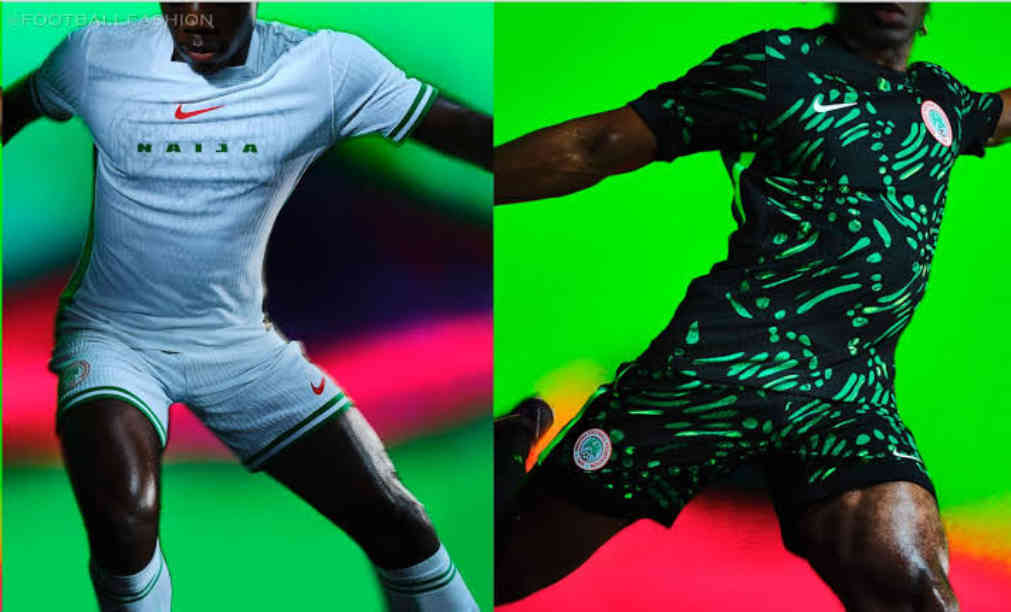
In 2024, Nike unveiled a bold reinvention: a predominantly white home shirt with green accents, flipping Nigeria’s traditional colour scheme on its head. Some versions even replaced the crest with a striking “Naija” across the chest, while the away kit leaned into black and green, once again pushing the boundaries of football design.
The strip remains the team’s most recent upgrade, worn as the Super Eagles battle for World Cup qualification. With another Africa Cup of Nations on the horizon, where Nigeria has already secured its place, anticipation is already building for what Nike will deliver next.
What has endured across every era, from Adidas to Nike, is a commitment to kits that go beyond performance wear. Each design has reflected what football means in Nigeria, not just a game, but a cultural expression woven into national identity.
Super Falcons Kits Timeline – 1991 To Date
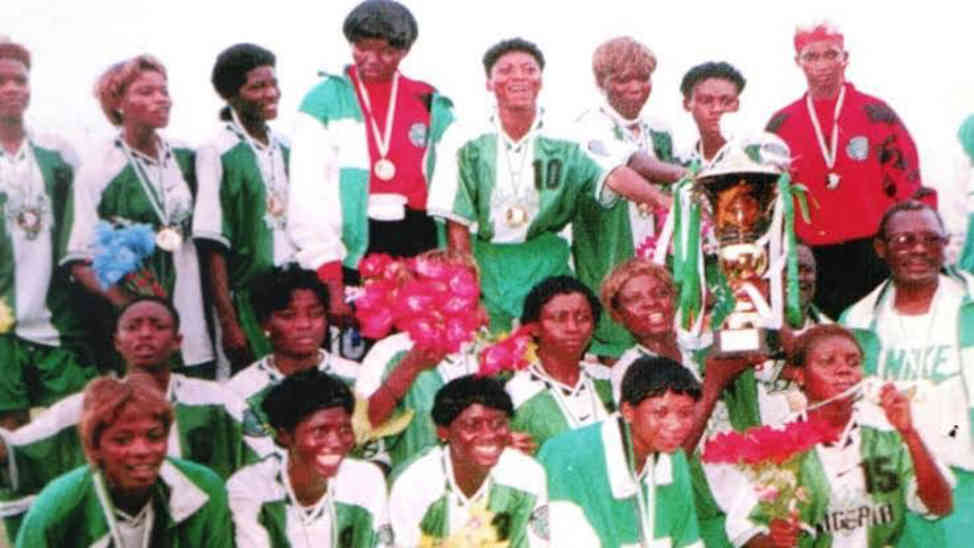
We’ve traced the timeline of the Nigeria Women’s Super Falcons kits from their inception in 1991 through to 2025. From the early years, the women’s national team often mirrored the traditional colours and designs of the men’s side, creating a unified identity across Nigerian football.
Over time, however, the Super Falcons have made their own mark. Several of their kits have set trends and earned global acclaim, with Nike’s recent designs, in particular, standing out for their bold statements and cultural resonance.
Early Years: 1991 To Mid-1990s
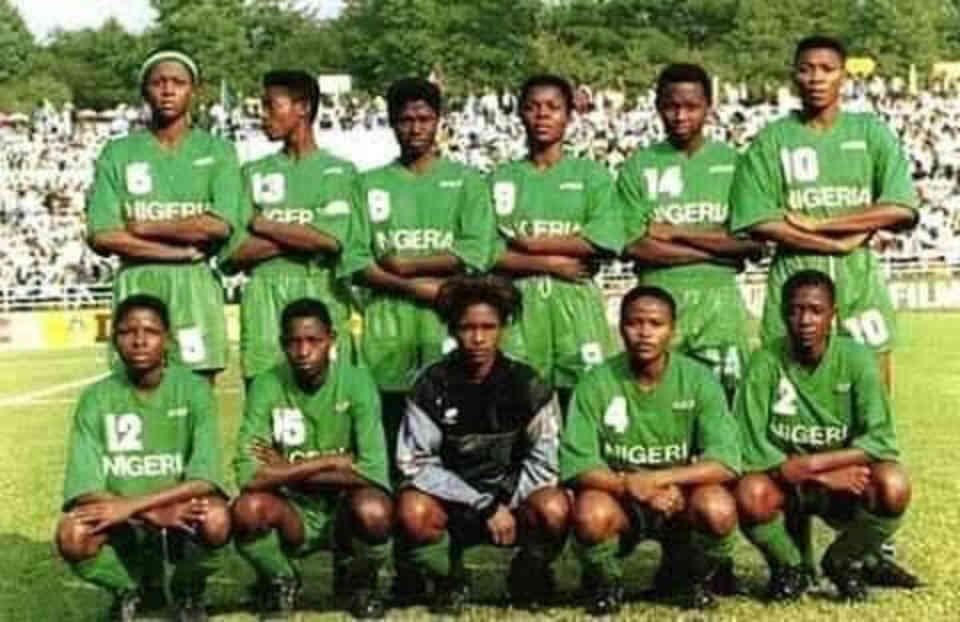
When the Super Falcons first stepped onto the world stage at the inaugural FIFA Women’s World Cup in 1991, their kit was as straightforward as it was symbolic.
Predominantly green shirts and shorts echoed Nigeria’s national colours, accented only by simple trims rather than the bold patterns that would later define the country’s football fashion.
Like many women’s teams of that era, the design reflected limited budgets and basic production methods. Yet, the solid green look carried a clear national identity and proudly marked Nigeria’s arrival at the highest level of the women’s game.
It was a historic first, a debut that etched the Super Falcons into football’s global story. The kit itself may not be widely remembered today, but the moment it represented remains unforgettable.
Late 1990s: A Growing International Presence (1999)
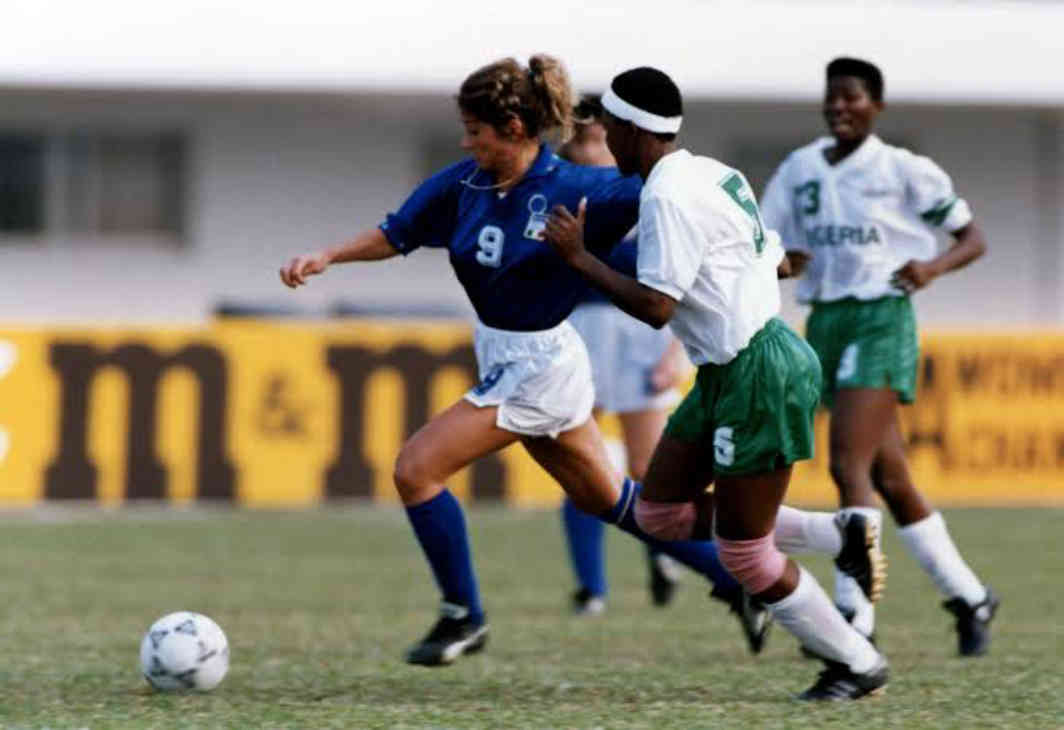
By the 1999 Women’s World Cup, the Super Falcons had grown into global recognition, and their kits reflected that rise. Still rooted in green, the designs began to show more refined cuts and clear manufacturer branding as visibility and professionalism increased.
The Super Falcons 1999 squad, which achieved Nigeria’s best-ever World Cup finish with a quarter-final run, is often remembered in darker-green kits with contrasting trims and the simple sponsor placements typical of the era.
The images from that tournament helped cement the Falcons’ green strip as an iconic look, not just for Nigeria but for African women’s football as a whole. It was a breakthrough moment, one that announced African women’s football on the world stage and laid the foundation for its growth into the powerhouse it is today.
2000s To Early 2010s: Supplier Changes And Modernisation
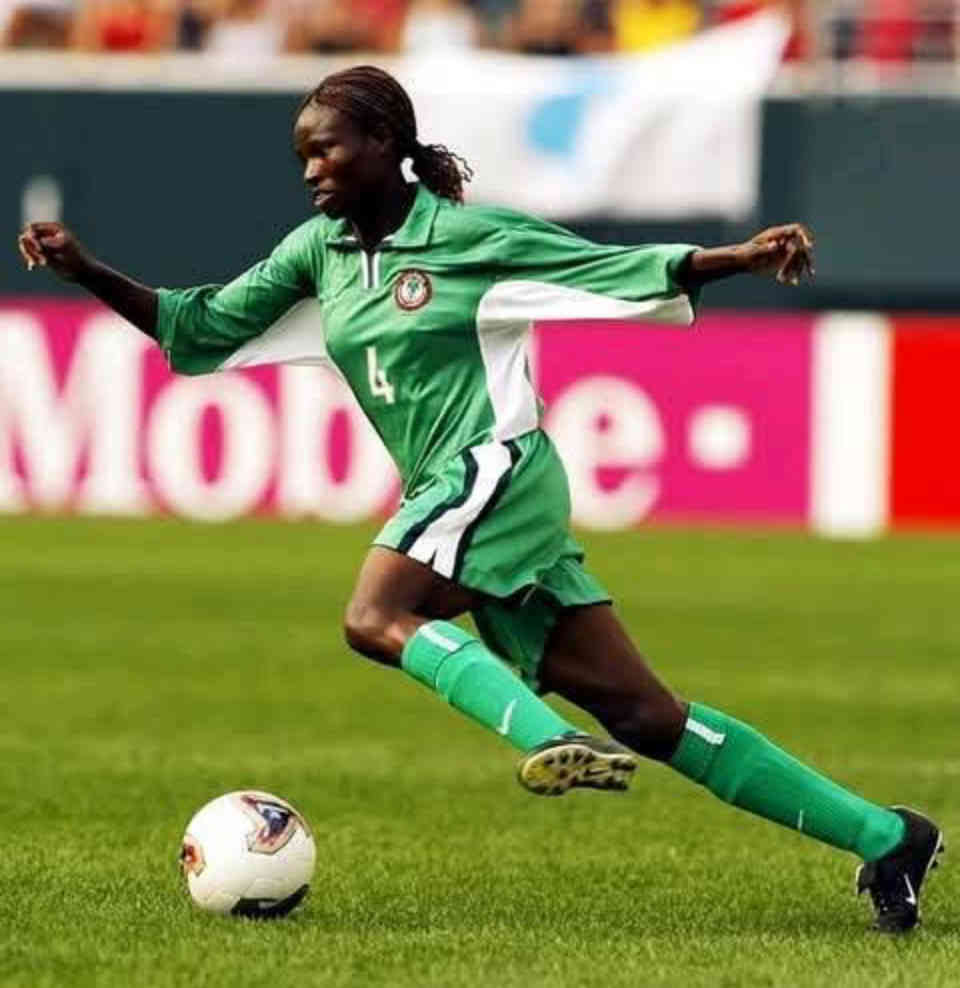
Through the 2000s and into the early 2010s, the Super Falcons’ kits cycled through several major sports brands, each bringing bolder design choices and new interpretations of Nigeria’s identity.
Supplier changes ushered in clear differences in fabric, fit, and graphic detail. The once plain, traditional looks gave way to more technical shirts, with side panels, printed trims, and modern collar styles that echoed broader shifts in football fashion.
By the mid-2000s, the Falcons’ kits had become noticeably more performance-driven. Lighter fabrics, athletic cuts, and advanced tailoring reflected global trends in women’s football apparel, as the game embraced professionalism and visibility on a new scale.
2015–2019: Nike Era And The Breakout 2019 Design
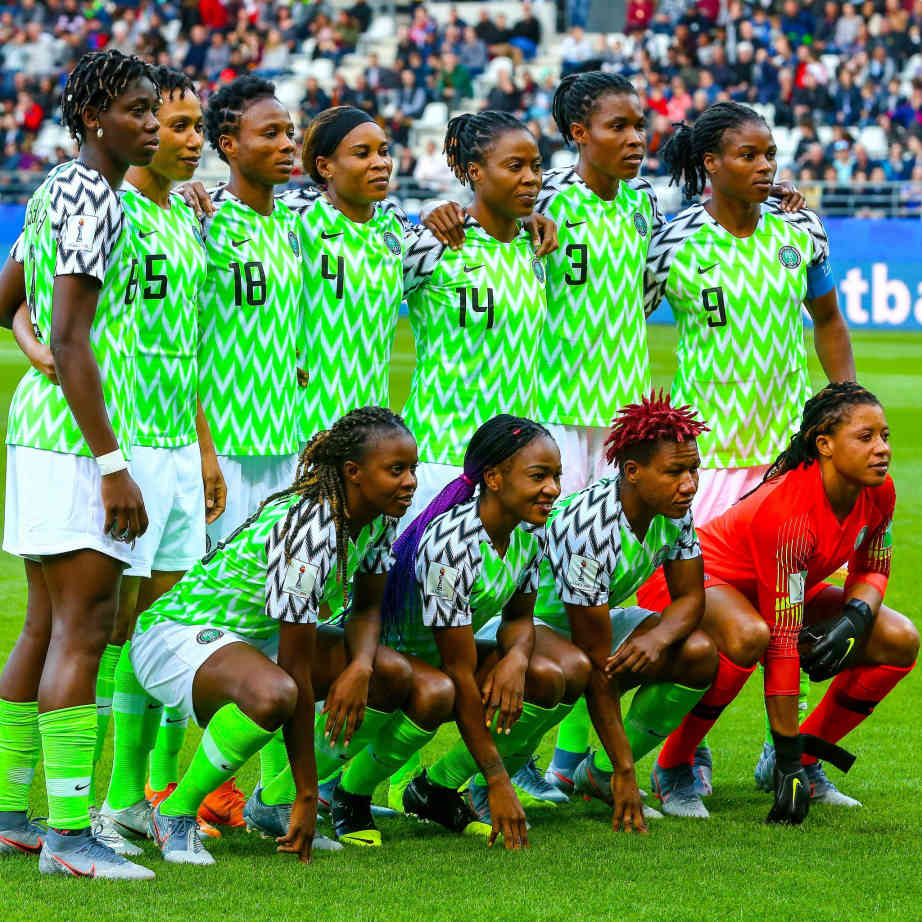
From the mid-2010s, Nike took charge of supplying Nigeria’s national teams, delivering some of the most talked-about kits in modern football, for both the Super Falcons and the Super Eagles.
At the 2019 Women’s World Cup, the Falcons took the field in a striking green-and-white patterned jersey that quickly became an international sensation. Praised as much for its fashion-forward design as its performance on the pitch, the kit turned heads far beyond the football world.
Its popularity pushed the Falcons’ shirt into streetwear culture, sparking global demand for replicas and cementing it as one of the standout designs in women’s football history. Even today, it remains a benchmark for how sport and style can merge to create a cultural phenomenon.
2020–2024: Contemporary Variations, Tributes And Fan Editions
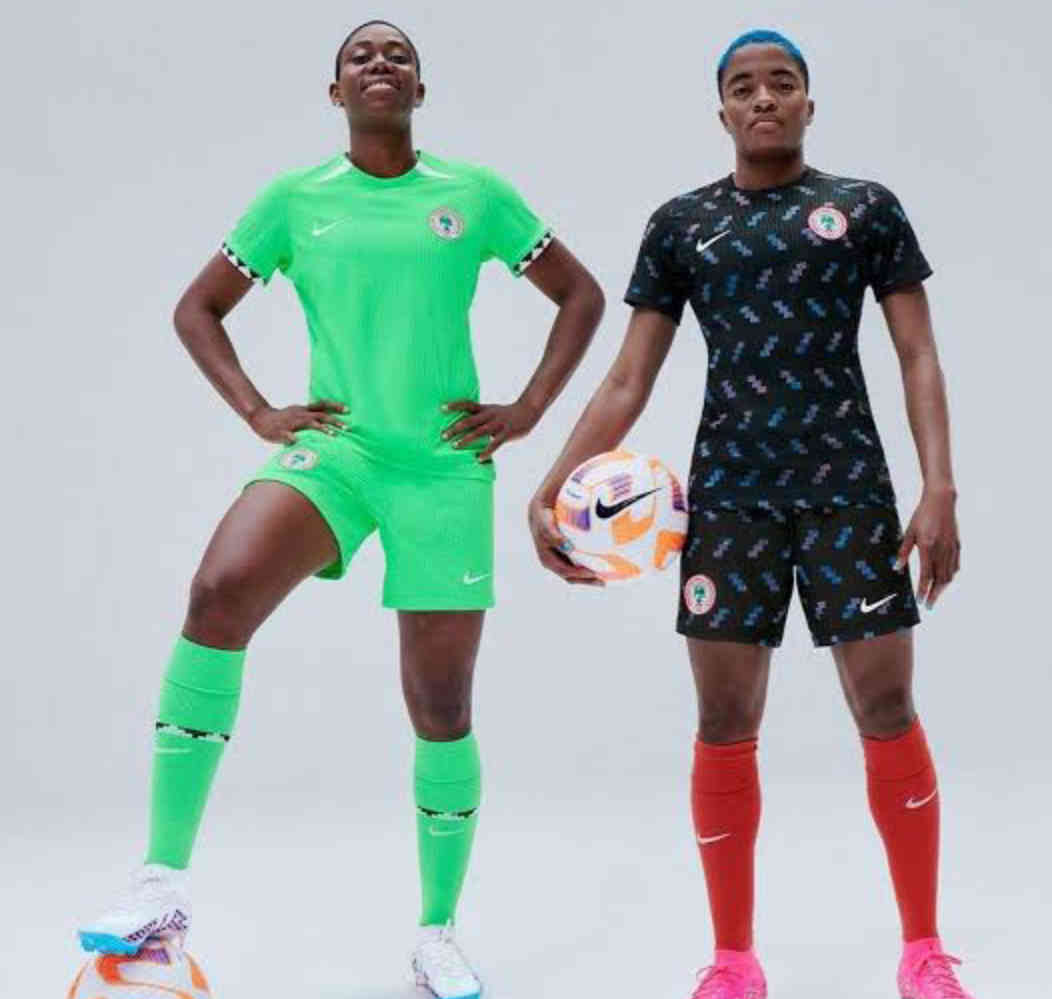
From the early 2020s, the Super Falcons continued under Nike, with kits that blended heritage motifs and cutting-edge sports technology, advancing far beyond the designs of earlier eras.
Nike introduced fan editions and commemorative variants that paid homage to Nigerian culture while adopting modern silhouettes and materials suited for both performance and everyday wear.
These special releases reinforced how the Falcons’ kit had evolved into more than just matchwear. It became a national symbol, a fashion statement, and a source of pride, one still worn by fans today whenever Nigeria takes the international stage.
2025 Super Falcons WAFCON Kit – Till Date
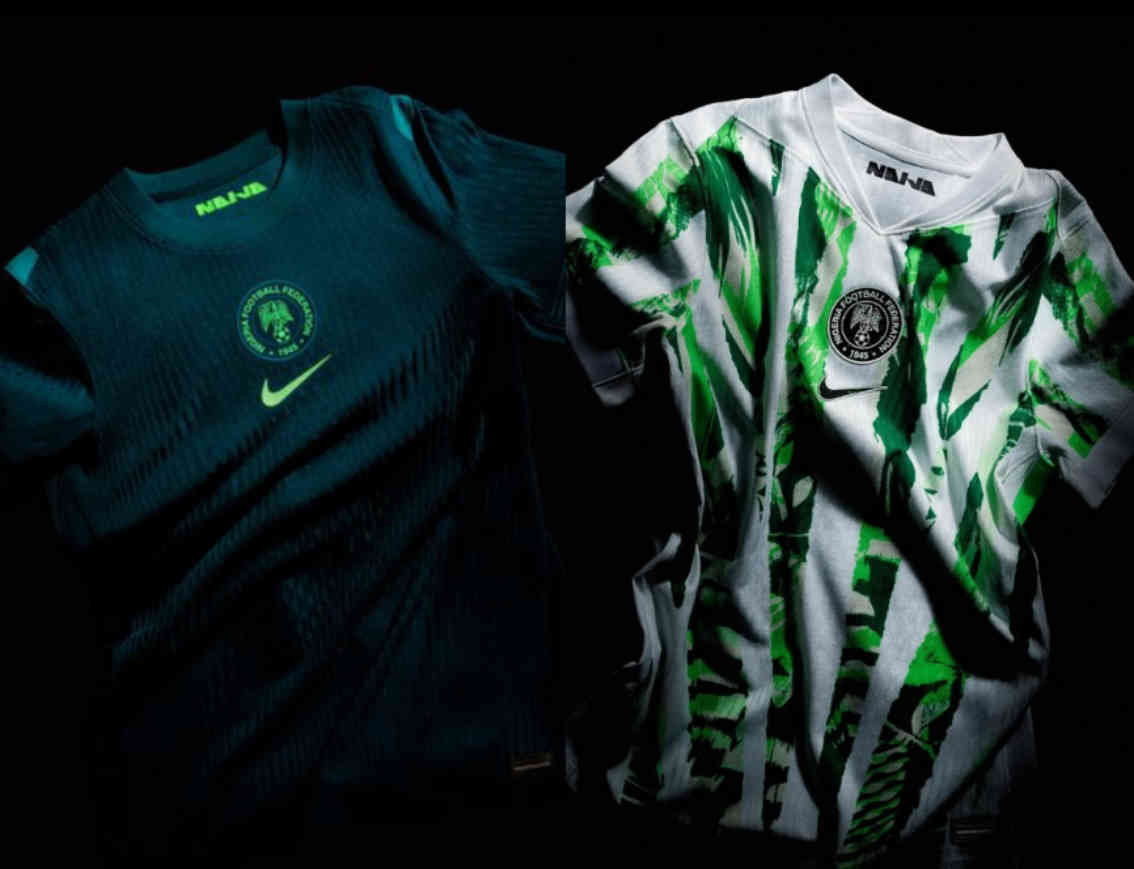
In 2025, Nike and the Nigerian Football Federation (NFF) unveiled a new Super Falcons kit collection, designed specifically for the Women’s Africa Cup of Nations (WAFCON). The kit launch proved symbolic, as the Falcons went on to win the tournament in the new strip.
The home shirt features a white base brought to life with sweeping green, brushstroke-style patterns, a deliberate nod to Nigerian textile artistry and traditional body painting. The away design offers a deep green base, accented with subtle textures and bright neon highlights for the crest, wordmark, and Nike Swoosh.
What makes this collection particularly significant is its individuality. For years, the Falcons typically wore kits identical to their male counterparts, but the 2025 designs gave them a distinct identity on the global stage.
Over the decades, Nigeria has alternated between major suppliers, most notably Nike and Adidas, but Nike’s recent direction has set a new benchmark. While speculation about a future switch remains, the strength of Nike’s current work suggests the partnership is here to stay.
The 2025 Super Falcons kit not only celebrates performance but also culture, setting it apart from anything seen in previous eras. It stands as one of Nike’s most innovative contributions to Nigerian football fashion.

